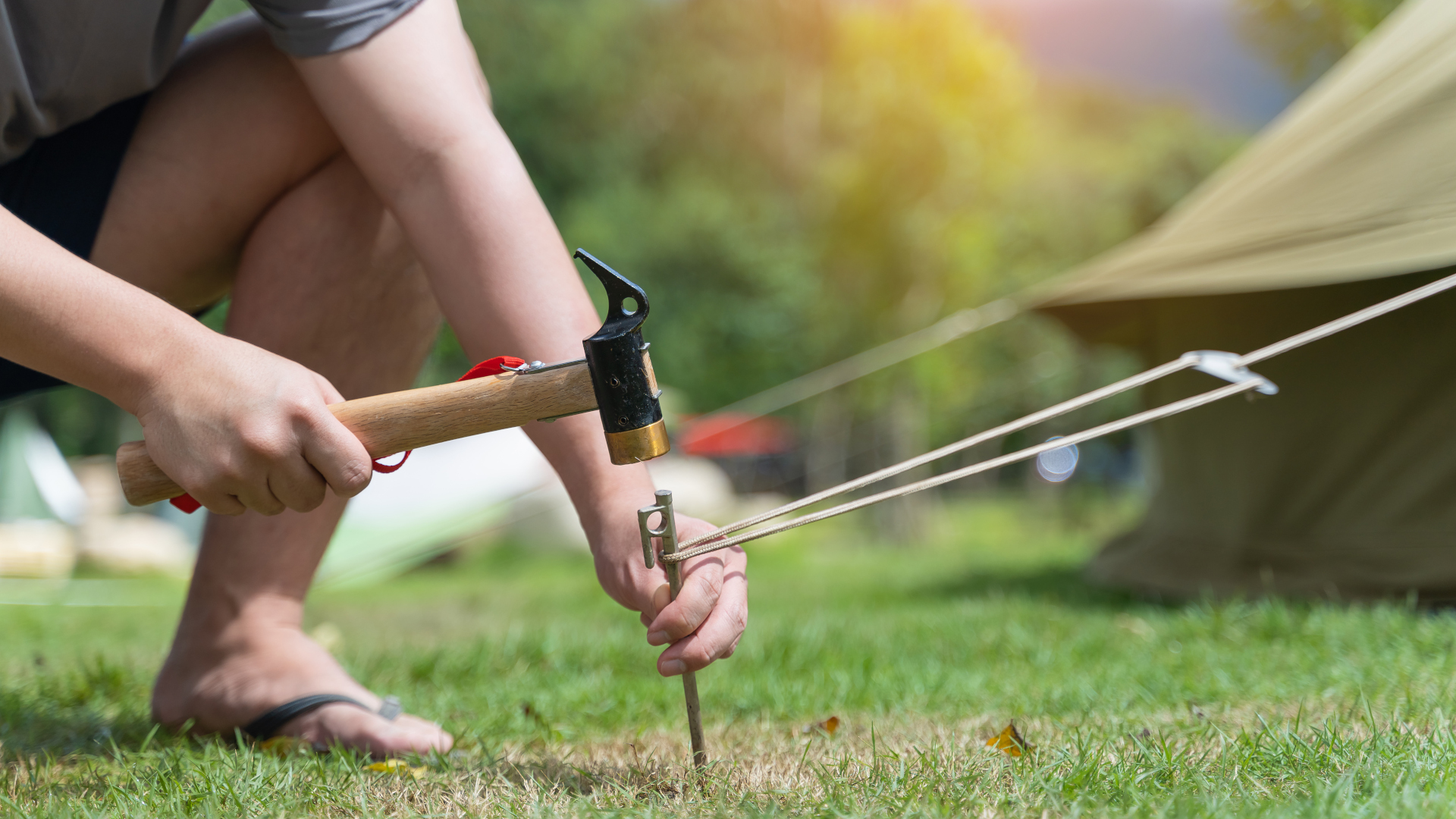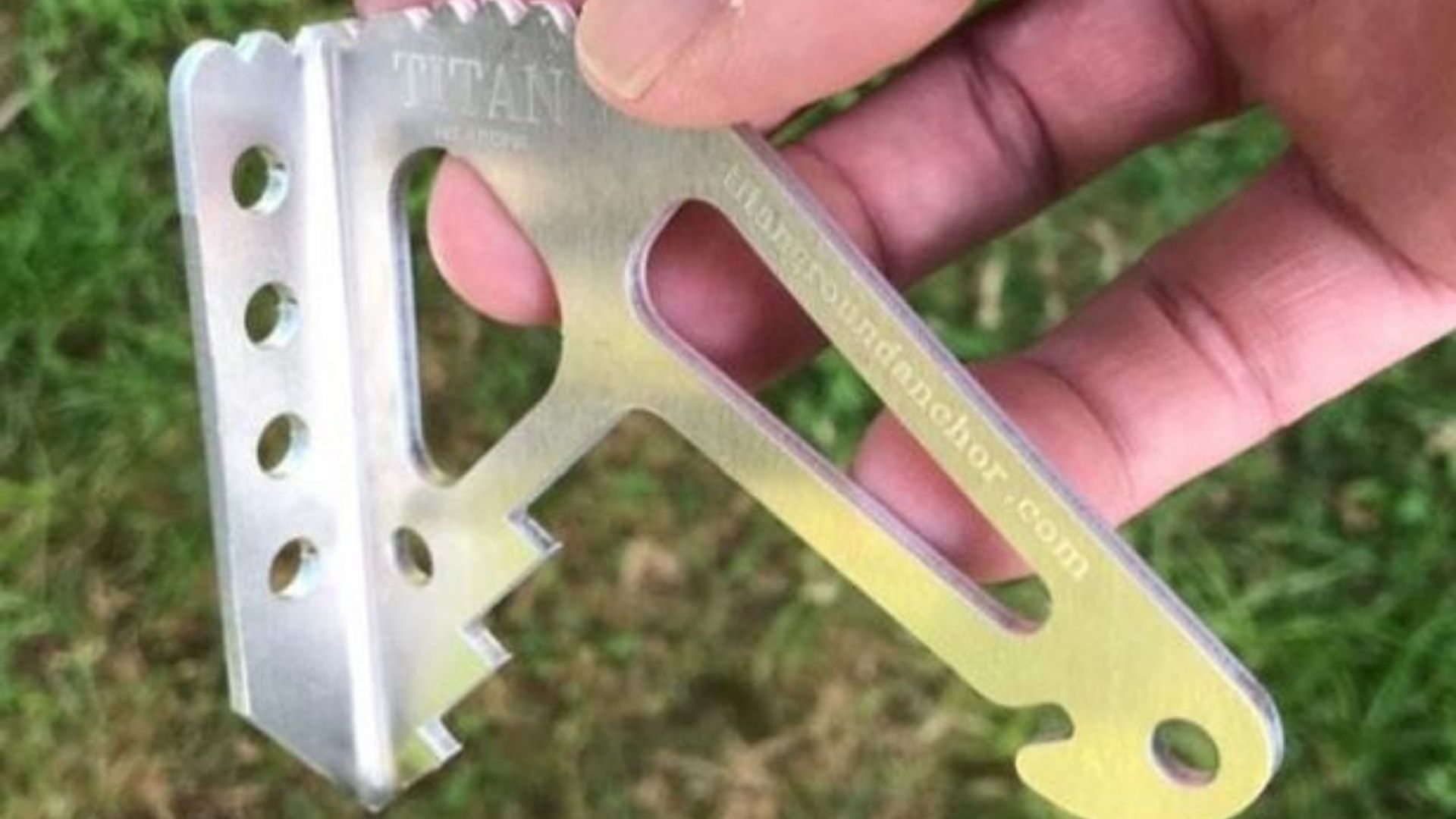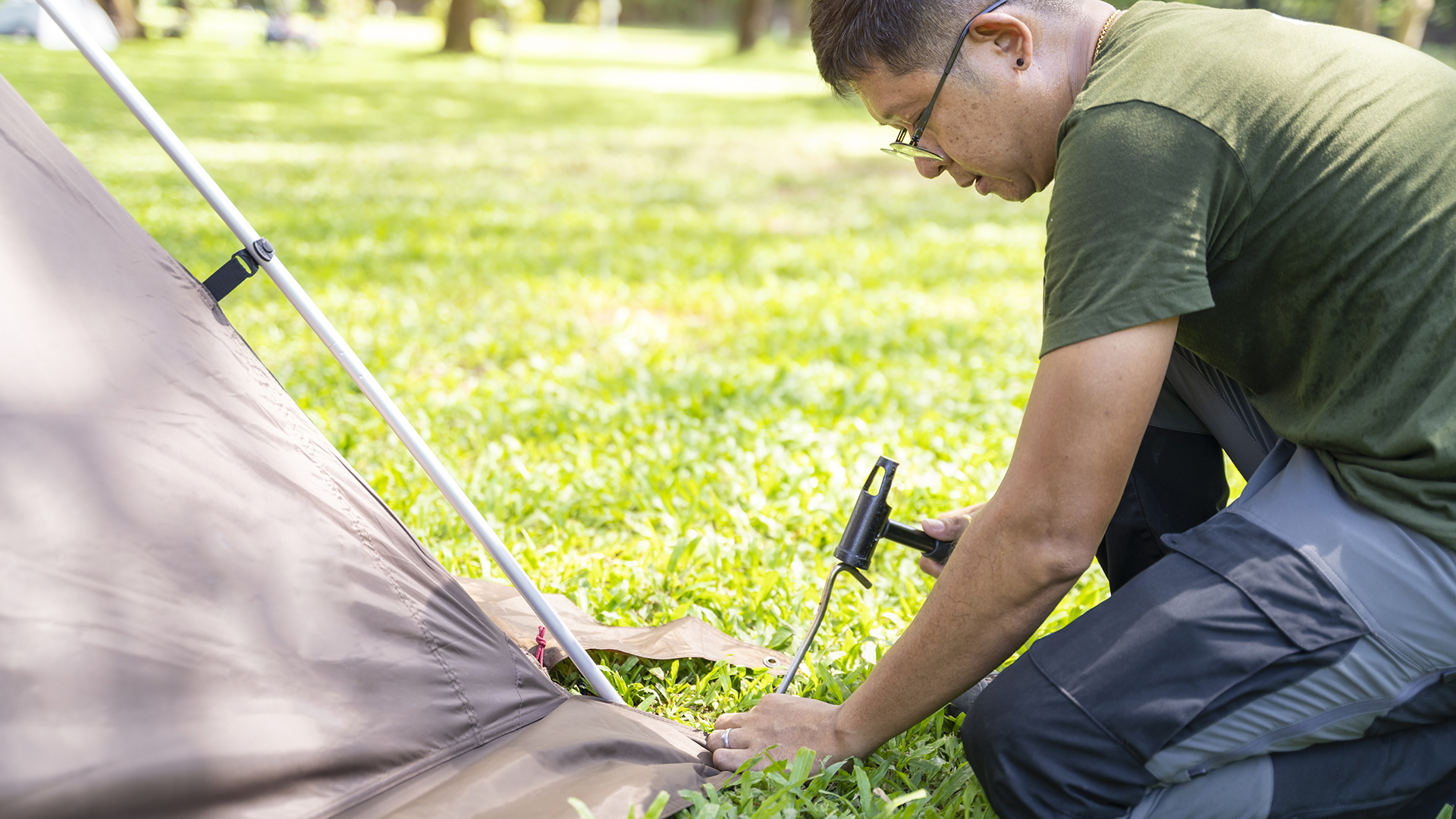
When camping somewhere windy, it’s very important to ensure your tent is pegged out properly. We all know this. But what does “properly” actually mean? Should tent pegs go into the ground at a 45° angle? Or are you better off driving them straight into the soil? In our latest Mythbusting article, we take a deep dive into proper peg etiquette to answer a burning question that’s been keeping the world awake at night: what’s the best way to stake out pegs?
Meet the expert
The myth
How many times have you pushed your pegs in at an angle when staking out a tent in calm conditions? Irrespective of the ground, the peg or the weather, it just feels like the right thing to do. If your guy line is pulling at the peg at, say, a 45° angle, then surely offsetting those forces by putting the peg into the ground at the equivalent 45° angle is the way to maximise strength. After all, Isaac Newton’s third law of motion tells us that for every action, there is an equal and opposite reaction. And even before he had his apple-flavored revelation, campers all over the world had long since being following their gut and driving pegs into the ground at an angle. But are they right to do so?

The evidence
When you push or pull something, the same effect occurs in the opposite direction. That’s to say that if Object A were to exert a force on Object B, Object B must exert a force of equal magnitude back onto Object A. Got it?
“If you put a tent peg in dead straight… your guy line will pull it out quite happily,” says Mark Turnbull, the developer of Titan Ground Anchors. “Guy lines run at about 30°, and you want the anchor at about 90° to the line of pull ideally. So if it’s coming in at 30°, you want the peg at 30° so it always stays at about 90° from the line of pull. But that’s mainly for shepherd’s hook pegs or Y-shaped pegs, such as the MSR Ground Hogs.”
Unfortunately, however, it’s not as simple as that. As Mark goes on to explain, the ground, the terrain and the force that’s being exerted on the peg all play a huge role in how the peg performs. Y-shaped pegs, for example, don’t let moisture pass through the peg as it presses through the earth. This can result in a pooling effect that can increase the chance of the peg being pulled out of the ground once the forces exerted on the peg hit a critical mass.

“Ultimately, the peg is only as good as the ground it goes in,” says Mark. “So if you put [a peg] in really slushy mud, it isn’t going to hold. And with sand, your best option is to use proper sand anchors that look like mini spades. If you clear the top sand and drive your pegs into the compacted sand below [at an angle], then add some sand on top and stamp down, so that your pegs are actually underground, then they should hold. But [conventional pegs] are only designed for meadow grassland, moorland or anywhere where you’d normally expect to pitch a tent when out wild camping.”
Therefore, it’s clear that not all surfaces (and not all pegs) are created equally. If you’re pitching in loose or wet ground, the way the ground responds to the “equal and opposite reaction” will differ, meaning your peg might ping out even when pitched at a perfect 90° from the line of pull. Additionally, in many parts of the world, the ground underneath the initial layer of topsoil can be rocky or – as in the case of Dartmoor National Park in the UK – comprise expansive sheets of flat granite. Therefore, when you’ve only got three inches of soft soil through which you need to drive seven inches of peg, you sometimes have to drive your peg in at an angle in order to get it in at all.
Which pegs deliver the best performance?
Considering that the best angle for staking out pegs depends on a host of factors, how about the pegs themselves? To find out I caught up with Oliver Edwards, who’s one of Terra Nova’s product designers. Working at one of the most reputable brands in the business, Oliver is helping to build the next generation of Terra Nova tents – and knows a thing or two about what types of pegs hold best in which conditions.
“To be honest, it often comes down to what [the pegs] are made from… before the surface area and the angle of the peg come into play,” Oliver tells Advnture. “[In general], standard steel shepherd’s hook pegs are the weakest, prone to bending under heavy load or in rocky soil, and best for light-duty use in soft to moderately firm soils. But if pegs are made from some sort of alloy, then you start to see more benefits. Terra Firma Pegs are great because they have that Y shape, which gives them additional strength from all three sides while also having a much higher surface area.”

In that sense, then, the surface area of a peg is perhaps a more important consideration than the angle at which it’s staked out, as resistance is the great equaliser in this scenario. If you push a nail into loose dirt, you can probably move it in any direction with little resistance. But swap out the nail for a spatula and you’ve suddenly got an issue. The added surface area increases the amount of resistance, meaning that you suddenly need a lot more force to drag that spatula through the dirt – that relationship between surface area and resistance is the whole reason parachutes work, after all. So what is the best all-rounder?
“We feel that the best option is something like a Y-shaped Terra Firma Peg. It delivers a balance between being lightweight, packable and very, very strong,” says Oliver. “It’s basically impossible to bend [one], unless you’re whacking it with a hammer! And as long as the peg is used in the environment it’s designed for, that’s almost never going to be the thing that fails first. What’s more likely to happen is that the guy-out point would probably tear off [the tent].”
Fact or fiction?
All in, then, it seems that this one is generally true. Pegs that go in at an angle will be stronger than pegs that go in straight – when using the same pegs in the same conditions, at least. For the biggest benefits, you should stake your pegs out at an angle that is exactly perpendicular to the line of pull. The good news? There are many affordable protractors on Amazon that’ll let you get your angles right, and all for an impressively ultralight 10 grams.
The bad news? The great outdoors never delivers laboratory conditions, and the way your pegs perform is more a result of their individual design and the conditions of the soil than the angle at which they’re poking out of the ground. So even though staking your pegs at an angle is a habit you should consider keeping, it doesn’t seem to be quite as important as you might think.







